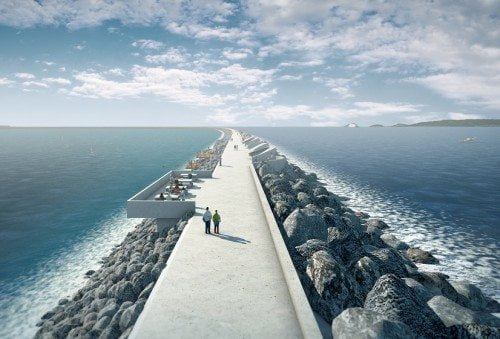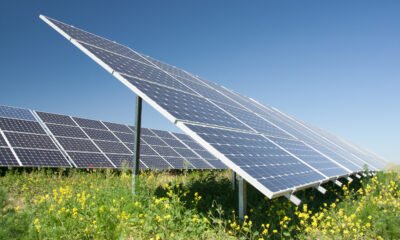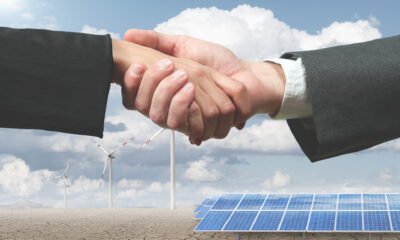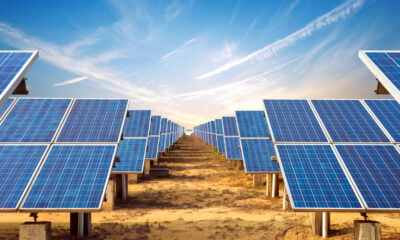

Energy
The Benefit of a Power System without Fuel is Partly from Technology – and Mostly from Mindset
In a world of flat or slow growth there are few industry sectors undergoing more exciting growth and technology innovation than power networks. We are moving from drilling, digging, shipping and burning hydrocarbons to generate our power, to people working to create an energy system that largely runs without thermal fuel.
However building this new system requires that we update our concepts and worldview so that we bring vision, policy and business decisions into alignment with where the technology and behaviours are headed.
- We are moving from a system based on a small number of big, centralised generators to a system that has a very large number, potentially millions, of decentralised energy resources, needing coordination on the grid.
- We are moving from a deterministic system where the obligation is to fulfill whatever demand users require, to a cooperative system based on a responsive philosophy, where the network works in cooperation with industrial and residential users to manage demand – turning it down or up – based on network characteristics and pricing efficiency.
- We are going from systems with high marginal cost – primarily in fuel to be burned – to systems with low marginal cost. This should change the way we think about business models, regulation, and industry.
Just as the microprocessor challenged mainframe culture in a very big way, so the energy transition challenges the traditional culture of the electricity sector, utility business models, and the role of the consumer-as-producer.
Let me give you three brief examples:
Example 1: Rethinking the concept of “baseload” power.
The idea of baseload is that society will have a constant (and growing) minimum demand for power. This demand profile varies during the day and seasonally, but the core of it – society’s basic requirement – is constant – and growing.
This historically led developed societies to build bigger and bigger centralised generation plants. There is no better demonstration of the risk management inherent in this than the evolution of bigger and more expensive nuclear power plants.
Baseload has thus become a culture. Just as businesses in the 1980’s were reluctant to give up mainframes to process payroll on a PC, we are reluctant to give up our idea of growing baseload.
But our concept of baseload needs to evolve. Electrical appliance efficiency, offshored industry and consumer pragmatism are working together to contain demand. In the UK we consume the same power annually as we did in 1995.
This can be hard to believe in the context of the energy services we enjoy. For example, the data centres that underlie our huge use of smartphone and cloud services only consume about 1.5% of our power, because many gains in efficiency have saved power while increasing services. Even with PCs and other information appliances, total IT-related consumption is less than five percent – significant, but well worth its small percentage in return for the benefits.
At the same time, the “unreliability” of wind and solar is mitigated with better use of modelling and other technologies that help these sources become more predictable. So it is increasingly out of date to think about “1 to 1” backup of renewables with additional thermal capacity. Backup is still necessary to guarantee energy, but the new ratio is more likely “0.5 to 1”
Continuing to build ever bigger centralised, fuel dependant generation in expectation of rising baseload does not make sense. Wind and solar, tidal energy, more transmission options and innovative storage (beyond batteries), combined with demand-side management can be part of an efficient, predictable energy system with a lower amount of thermal capacity.
This is why a big, expensive, central mega-plant that outputs the same level of megawatts every hour of every day for the next 60 years is not necessarily the most efficient way of solving tomorrow’s problem. Whereas the predictability and flexibility of tidal lagoons — also large scale generators but with double the lifespan — provides nations with the opportunity to define and optimise future systems around known characteristics of their operational behaviour. Flexible, reliable tidal lagoon energy will be there for the long term.
Example 2: Connecting EV batteries and crypto currencies
Whereas traditional thermal generation takes minutes to ramp up, battery storage on the grid can respond within milliseconds. This is increasingly helpful as we reduce our reliance on baseload power and increase our reliance on variable power from renewables.
There is a tendency to visualise battery storage as big blocks of batteries. There will be some large scale storage like this, but the evolution will be much more granular and innovative.
For example, Nevada has given approval to build a network of electric shuttle trains loaded with weights that ascend a grade during periods of surplus, then when needed descend and use their generative braking systems to put power back into the grid.
Many small nodes on the network will have innovative storage, which will replicate. One of the smallest nodes will be the household’s electric vehicle, connected to the grid.
One million electric vehicles connected to the grid to re-charge could represent more instantaneous power than a nuclear reactor (or even one of our larger lagoons). When the network needs to balance power instantaneously – say, if an interconnector from Europe trips unexpectedly – the network will put out a “buy” signal, to be met in milliseconds from hundreds of thousands of electric vehicle batteries that respond to the signal, and instantly go from charging to discharging.
This kind of resource will be an important part of regulating the network in a renewable world. The question is, how does everyone get paid and how do customers connect directly to sources of revenue without being side-lined by utilities?
To make this storage work, we need smart revenue-metering systems to account for and pay those vehicle owners – without the expense of installing additional kit in every car that is under the direct control of one particular utility.
This is very different from today’s “net-metering” – where the utility visits every generating household to install a meter that is directly connected to the centre. This barely works in small scale, and is impossible at large scale.
We envision further development of an ecosystem of trusted third parties who conceive and implement grid connection and revenue systems. These third parties might well make use of crypto-currencies to keep track of and compensate vehicle owners for the power they sell, as well as the power they use.
This is, of course, a very big challenge to the culture of today’s electric utilities, who grew up in a centralised world where they install, own and measure every single meter on every household and business.
Example 3: Intelligent energy as part of a revitalised industrial strategy Renewable power has a key characteristic – low marginal operating cost.
The marginal operating cost of a programme of solar parks is close to zero, whereas the marginal operating cost of a natural gas or nuclear plant is significant. We have never dealt with the opportunity of large amounts of power at essentially zero marginal cost.
This is a significant characteristic of tidal lagoon power — higher up-front costs for the impoundment and turbines, behaving like a dam with a lifespan of over 100 years, and an average operating cost that is very low, close to zero.
The potential advent of very low cost clean power from a fleet of tidal lagoons on the Welsh and English coast enables an industrial strategy component.
Not only will a programme of construction of more than six lagoons create tens of thousands of skilled construction and manufacturing jobs over a generation, the resulting low marginal cost of this power will enable industrial growth elsewhere in the UK.
One of our investors has a concept to make use of low cost renewable energy to make steel. Today we ship scrap steel to Turkey for re-melting because it is unaffordable to do so here. Tidal lagoon power and other renewable electricity will be used to power a fleet of electric arc mini mills that melt recycled steel.
An electric mini mill runs in a 40-minute cycle – perfect for demand-side management. The mill will ask the network, “what price if we melt now?”, and get an answer that informs the economics. The network can ask the mill to “wait until melting”, or even “melt now at a very low price” if the grid is flooded with renewable power.
In this world, the mill itself becomes part of the energy asset community. It adds value to the system as a whole, whilst improving the efficiency of its own operation.
This is an example of a new technology and industrial business model enabled by the transformation of power systems. And this how a tidal lagoon power strategy can be part of enabling a revitalised UK industrial strategy.
We are at the beginning of an exciting cycle. I hope these examples have illustrated my main point: that the advent of a transformed power system that runs without fuel is causing a mindset and cultural shift that will have profound effects. We will be making many new connections besides the grid connections, as we play our part in the ongoing evolution of the UK’s power system.
By Mark Linder, Corporate Development, Tidal Lagoon Power
This article first appeared in the Guide to Clean Energy


 Features9 months ago
Features9 months agoWhat is the Eco-Friendliest Option to Wash Your Dishes?

 Environment12 months ago
Environment12 months agoBuilding a Career in Green Construction: Tips and Insights

 News10 months ago
News10 months ago5 Ways Fleet Maintenance Software Can Help Businesses Be More Eco-Friendly

 Features10 months ago
Features10 months agoAddressing Pressing Ethical Concerns with Crypto Exchanges





























